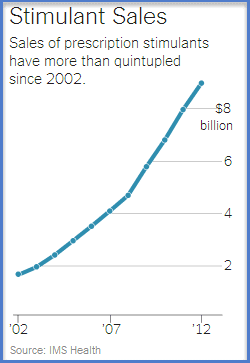When was the last time you had an hour – an hour without distractions – just to think about things? Or even a half hour? Fifteen minutes?
As I write this blog, instant messages flash up on my second monitor while my printer churns out workshop handouts and my cell phone beeps a voice mail alert. Yes, today’s communication and computer tools make us more productive than ever, but we’ve got to ask: At what cost?
News reports attest that our electronic addictions are starting earlier than ever – and involve more potential distractions than ever. Today’s kids have access to computers, iPods, smart phones, video games, TV and all sorts of gadgets. The power of electronic media’s grip on kids was pounded home last month in a New York Times article:
The average young American now spends practically every waking minute — except for the time in school — using a smart phone, computer, television or other electronic device, according to a new study from the Kaiser Family Foundation.
Those ages 8 to 18 spend more than seven and a half hours a day with such devices, compared with less than six and a half hours five years ago, when the study was last conducted. And that does not count the hour and a half that youths spend texting, or the half-hour they talk on their cellphones.
And because so many of them are multitasking — say, surfing the Internet while listening to music — they pack on average nearly 11 hours of media content into that seven and a half hours.
beret claire/Flickr
“Multitasking” indeed seems to be the norm for the youngest generations. But while we usually think of it as doing several tasks at once, it’s actually nothing of the sort. As psychiatrist Edward M. Hallowell defined it in an earlier Times article on the phenomenon and its effects, “Multitasking is shifting focus from one task to another in rapid succession. It gives the illusion that we’re simultaneously tasking, but we’re really not. It’s like playing tennis with three balls.”
This has, as the article notes, a severe impact on efficiency and the ability to focus. As Walter Kirn put it in his Atlantic essay on the culture of multitasking we find ourselves in:
Multitasking messes with the brain in several ways. At the most basic level, the mental balancing acts that it requires—the constant switching and pivoting—energize regions of the brain that specialize in visual processing and physical coordination and simultaneously appear to shortchange some of the higher areas related to memory and learning. We concentrate on the act of concentration at the expense of whatever it is that we’re supposed to be concentrating on.
* * *
Even worse, certain studies find that multitasking boosts the level of stress-related hormones such as cortisol and adrenaline and wears down our systems through biochemical friction, prematurely aging us. In the short term, the confusion, fatigue, and chaos merely hamper our ability to focus and analyze, but in the long term, they may cause it to atrophy.
Thus, the effects of electronic media use in the Kaiser study mentioned above should be no surprise:
While most of the young people in the study got good grades, 47 percent of the heaviest media users — those who consumed at least 16 hours a day — had mostly C’s or lower, compared with 23 percent of those who typically consumed media three hours a day or less. The heaviest media users were also more likely than the lightest users to report that they were bored or sad, or that they got into trouble, did not get along well with their parents and were not happy at school.
The teachers in our Yoga Calm courses report the same. They describe how increasing numbers of children have trouble focusing in class and seem to need to be more entertained than taught. They observe that extended reading (vs. quick screen “bites” of text) and time-on-task skills have diminished significantly.
Now, it’s neither practical nor desirable to cut off children’s access to electronic media altogether, but we would recommend providing more opportunities for children to “unplug,” move their bodies, develop face-to-face communication skills and practice focusing on just one thing for some length of time. Kids need uninterrupted time to be still, in their bodies and with their own thoughts and imaginations – a respite from multitasking. This is time for them to relax, as well as to integrate their experiences.
In fact, we all need to do this. And what better way to teach the children in our lives than to model it ourselves? We can make a point of turning off our phones at dinner and when we are speaking with our children. We can have family “media fasts,” where we might actually sit and read together or play some “old fashioned games” like cards. Or how about a walk and talk?
I think I will start right now, by going for a walk without my phone!
– Jim Gillen
Post-walk postscript:
The good news: I walked for 20 minutes. My back felt better. I heard flickers and other birds, discovered my neighbors had chickens, remembered something important I had to do today…
The bad news: I also discovered that our roses, hydrangea and raspberries need pruning. Dang. Guess I’ll have to go back outside later today. 🙂





